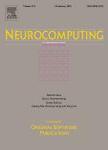版权所有:内蒙古大学图书馆 技术提供:维普资讯• 智图
内蒙古自治区呼和浩特市赛罕区大学西街235号 邮编: 010021

作者机构:Phenikaa Univ Sch Comp Hanoi 12116 Vietnam Phenikaa X Joint Stock Co Phenikaa Grp Hanoi Vietnam Viettel Grp Viettel Aerosp Inst Optoelect Ctr Hanoi Vietnam Hanoi Univ Sci & Technol Sch Mech Engn Dept Mechatron Hanoi Vietnam Phenikaa Univ Fac Vehicle & Energy Engn Hanoi 12116 Vietnam
出 版 物:《NEUROCOMPUTING》 (Neurocomputing)
年 卷 期:2025年第623卷
核心收录:
学科分类:08[工学] 0812[工学-计算机科学与技术(可授工学、理学学位)]
主 题:Rotated object detection Bounding box regression Gaussian distribution Bhattacharyya distance
摘 要:Detecting rotated objects accurately and efficiently is a significant challenge in computer vision, particularly in applications such as aerial imagery, remote sensing, and autonomous driving. Although traditional object detection frameworks are effective for axis-aligned objects, they often underperform in scenarios involving rotated objects due to their limitations in capturing orientation variations. This paper introduces an improved loss function aimed at enhancing detection accuracy and robustness by leveraging the Gaussian bounding box representation and Bhattacharyya distance. In addition, we advocate for the use of an anisotropic Gaussian representation to address the issues associated with isotropic variance in square-like objects. Our proposed method addresses these challenges by incorporating a rotation-invariant loss function that effectively captures the geometric properties of rotated objects. We integrate this proposed loss function into state-of-the-art deep learning-based rotated object detection detectors, and extensive experiments demonstrated significant improvements in mean Average Precision metrics compared to existing methods. The results highlight the potential of our approach to establish anew benchmark in rotated object detection, with implications fora wide range of applications that require precise and reliable object localization irrespective of orientation.